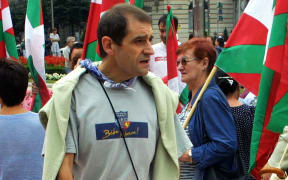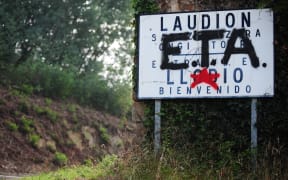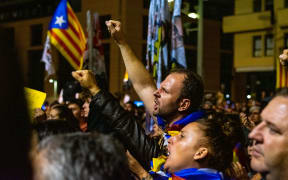Spanish dictator Francisco Franco's remains have been moved from a vast mausoleum to a low-key grave, 44 years after he was buried.
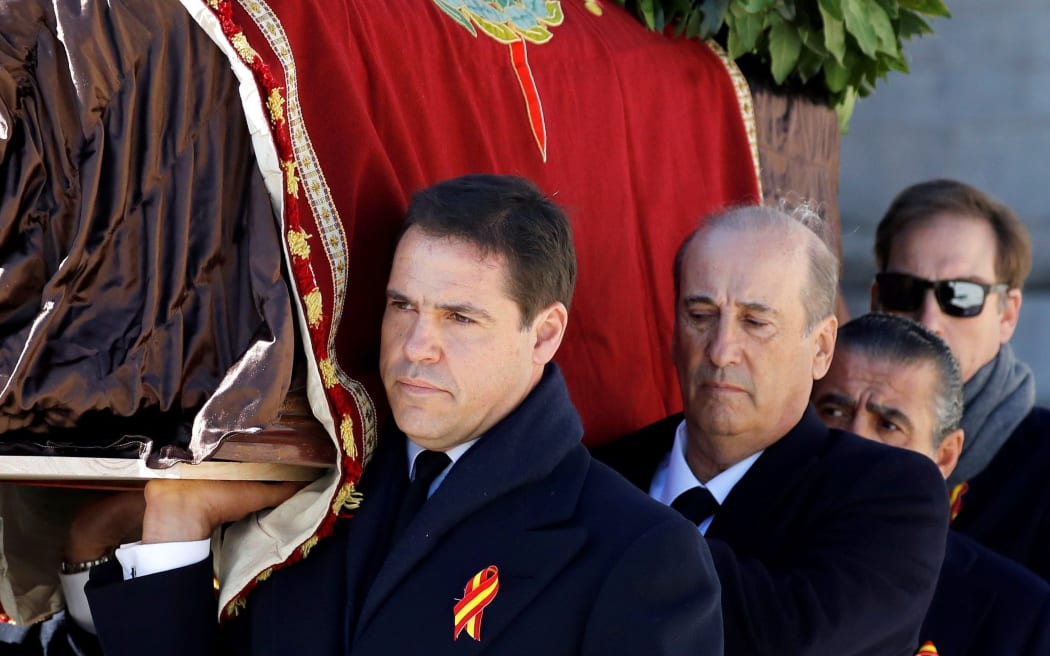
Family members Prince Louis Alphonse of Bourbon, left and Francis Franco carry the coffin of Spanish dictator Francisco Franco out of the basilica of the Valle de los Caidos (Valley of the Fallen) mausoleum in San Lorenzo del Escorial. Photo: AFP
The long-awaited relocation fulfils a key pledge of the socialist government, which said Spain should not continue to glorify a fascist who ruled the country for nearly four decades.
His family unsuccessfully took legal action against the reburial.
The Franco era continues to haunt Spain, now a vibrant democracy.
After the remains were exhumed in a private ceremony, family members carried the coffin out of the basilica of the Valley of the Fallen, a national monument carved into a mountain about 50km from Madrid.
Franco's remains were then loaded on to a helicopter and taken to a private family vault at a cemetery in Madrid, where they were re-buried next to his late wife.
In a television address on Thursday, Prime Minister Pedro Sánchez said the exhumation was a step towards reconciliation, adding: "Modern Spain is the product of forgiveness, but it can't be the product of forgetfulness."
Only a few people were allowed to attend the event, which took place under high security. They included the justice minister, an expert in forensics, a priest and 22 descendants of Francisco Franco. Media were excluded but more than 200 journalists were near the site.
A crane was needed to lift a concrete slab weighing 1500kg that covered the coffin. In total, the exhumation and re-burial will cost about £54,000 ($NZ108,600).
Why is Franco being moved?
The Valley of the Fallen houses more than 30,000 dead from both sides of the 1936-39 Spanish Civil War, in which Franco's Nationalist forces defeated the Republican government.
It was partly built by political prisoners, whom Franco's regime subjected to forced labour.
Thousands of those killed by his forces were interred there without their families' consent.
The site has been a focal point for Franco supporters and a shrine for the far right. Visitors were able to lay flowers and say prayers at the late dictator's tomb.
Prime Minister Sanchez said on Thursday the site would symbolise something different when it reopens in a few days' time, and that only victims of the civil war now lie interred there.
Franco was moved to the El Pardo cemetery, where various other politicians are interred. The family were not allowed to drape the national flag on his coffin but took along the same flag that covered Franco's coffin at his 1975 funeral.
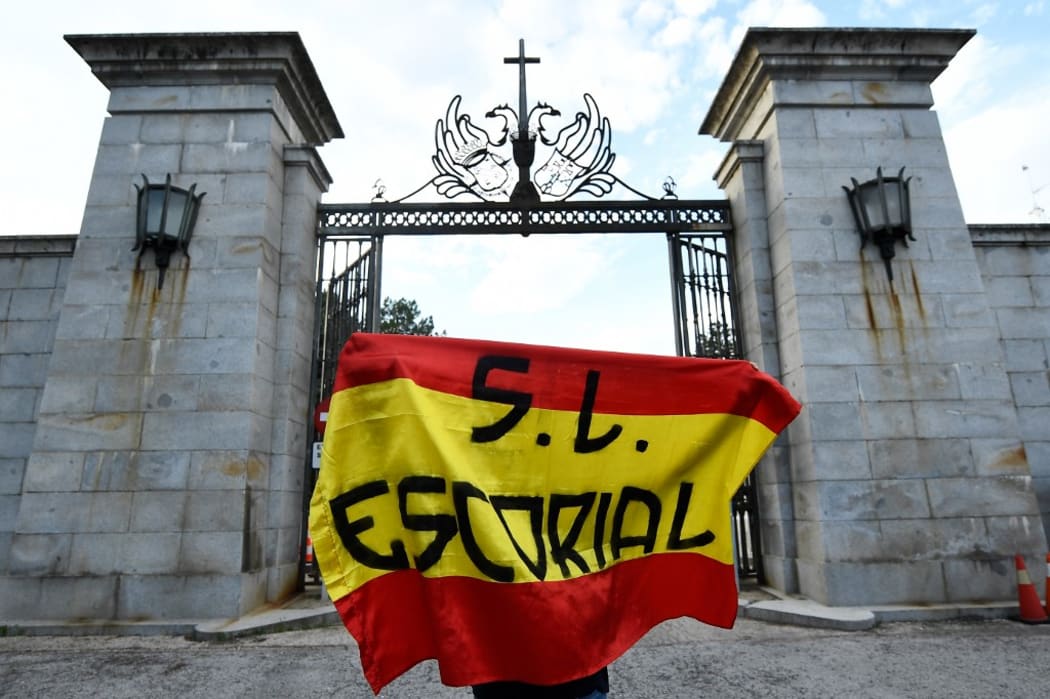
A man holds a Spanish flag in front of the closed access road to the Valle de los Caidos (The Valley of the Fallen), Franco's resting place for 44 years. Photo: AFP
Removal controversial for Spaniards
The burial place of Franco has been the subject of fierce debate for decades and Spaniards remain divided over whether his remains should have been moved, newspaper polls suggest.
An El Mundo poll this month said 43 percent supported the move, with 32.5 percent against and the rest undecided.
Many descendants of Franco's victims are happy that action is finally being taken.
"The idea that people who were killed by Franco's troops are buried together with Franco, it's very absurd, and they're still glorifying him as if he were the saviour of Spain," Silvia Navarro, whose great uncle died in 1936, told the BBC.
But critics have accused the government of playing politics ahead of an election next month.
About 100 Franco supporters gathered outside the El Pardo cemetery on Thursday to protest the exhumation.
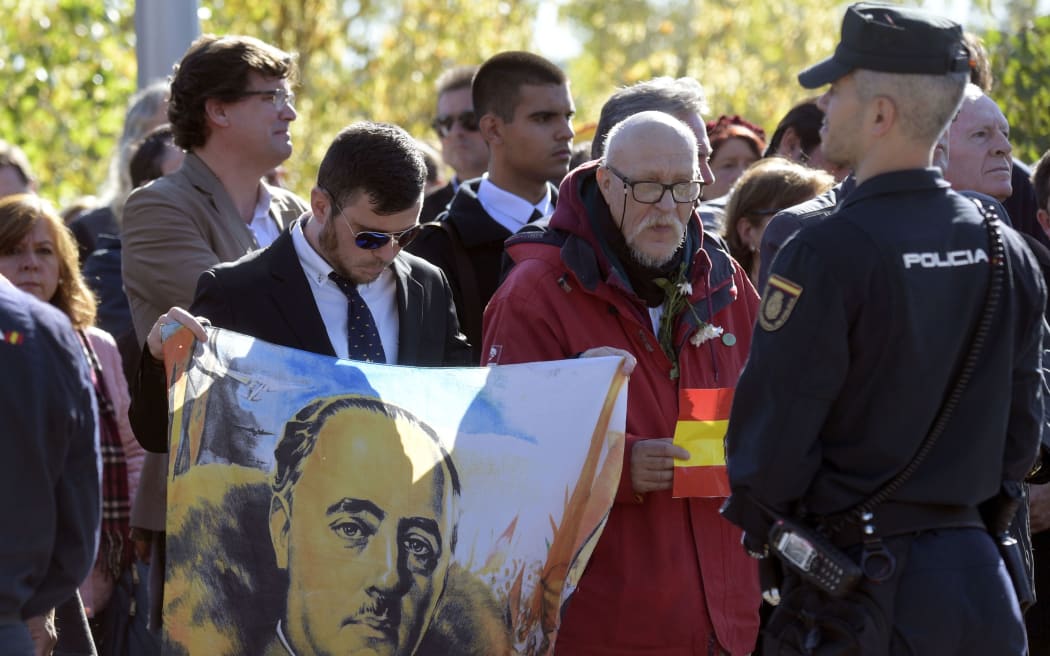
Pro-Franco supporters gather outside the cemetery of Mingorrubio-El Pardo in Madrid. Photo: AFP
Decision angers Franco's family
Franco's grandson, Francisco Franco y Martinez-Bordiu, said he was furious with the government.
"I feel a great deal of rage because [the government] has used something as cowardly as digging up a corpse as propaganda, and political publicity to win a handful of votes before an election," he told Reuters news agency.
Last month, the Supreme Court rejected an appeal by Franco's family against the exhumation. It also dismissed a proposal for an alternative site.
The family, who did not want him moved at all, preferred for him to lie in a family crypt in the Almudena Cathedral - in the centre of the capital.
But the government argued that the former dictator should not be placed anywhere where he could be glorified. It also said there were potential security issues with the cathedral site.
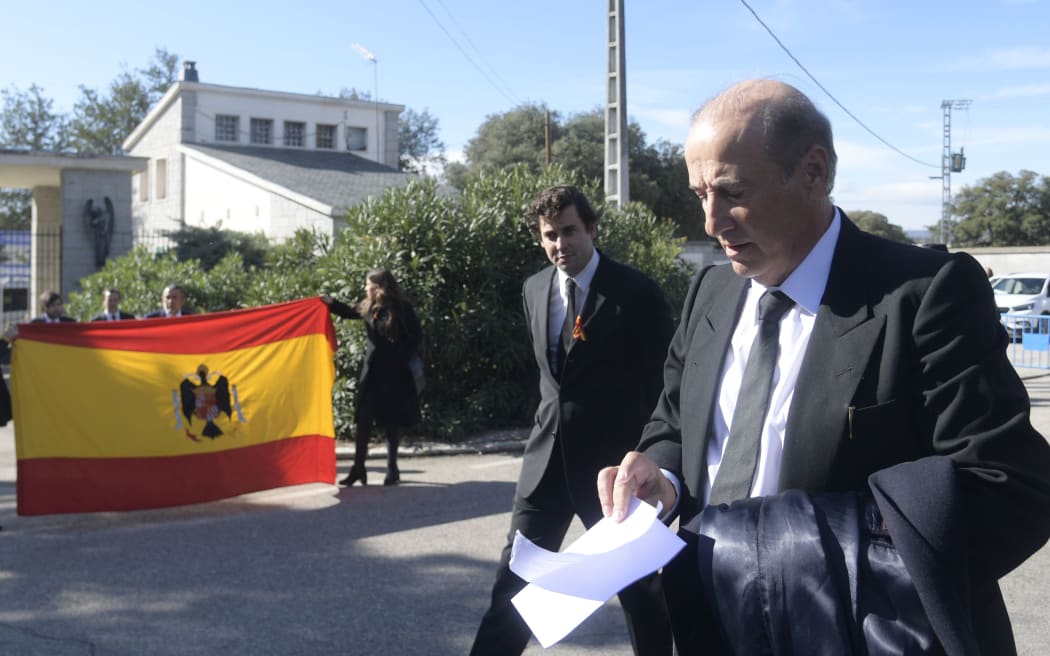
Franco's grandson, Francisco Franco y Martinez-Bordiu, is accusing the government of using his grandfather's remains for propaganda. Photo: AFP
How has Spain dealt with the Franco era?
Unlike in Mussolini's Italy and Nazi Germany, defeated in World War II, Spain's transition to democracy in 1975 was more gradual.
Though democracy is well established now, many believe the country has never faced up to its fascist past. There was an unwritten "pact of forgetting" during the transition.
An Amnesty Law adopted in 1977 prevents any criminal investigation into the Franco years. Statues of Franco were removed and many streets were renamed.
A Historical Memory Law, passed in 2007 by the socialist government at the time, recognised the war victims on both sides and provided some help for surviving victims of Franco's dictatorship and their families.
But the work to locate and rebury thousands of civil war dead has been slow and controversial.
More than 100,000 victims of the conflict, and the ferocious repression carried out afterwards, are still missing.
- BBC
